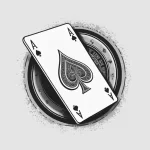Chess, with its storied history and enduring appeal, stands as a remarkable test of strategy and skill. This timeless board game has captivated players across the globe for generations. In our exploration of the world of chess, we’ll uncover the intricacies of the game, its origins, the enduring fascination it holds for enthusiasts from all walks of life, and how to embark on your own chess journey.
A Journey through Chess History
Chess has a captivating history, stretching back over a millennium. Its origins are believed to lie in Northern India during the 6th century, where it was known as “Chaturanga.” This early form of chess represented the four main components of an Indian army: infantry, cavalry, elephants, and chariots.
As time passed, the game evolved and traveled to different corners of the world. European nobility embraced it during the Middle Ages, shaping it into the form we recognize today. In the 19th century, modern rules, including the en passant rule and castling, solidified the game’s structure.
The Chessboard and Its Pieces
The chessboard consists of a classic 8×8 grid, where each player begins with 16 pieces, including one king, one queen, two rooks, two knights, two bishops, and eight pawns. The game’s ultimate objective is to checkmate the opponent’s king, placing it in a position where escape is impossible.
- The King: The king, the centerpiece of the game, moves in a single square in any direction, demanding constant vigilance to protect.
- The Queen: The queen reigns as the most potent piece, able to move in any direction across the board, providing a formidable presence.
- The Rook: Rooks advance horizontally or vertically, carving out vital pathways across the chessboard.
- The Knight: Knights’ unique L-shaped movements grant them the ability to leap over other pieces, making them invaluable in tactical maneuvers.
- The Bishop: Bishops traverse the board diagonally, staying within their chosen color squares, making them ideal for long-range strategies.
- The Pawn: Pawns move forward one square but capture diagonally. They possess the potential for transformation and promoting a powerful queen.
The Art of Chess Strategy
Chess is not merely a game; it’s a grandmaster’s canvas where players meticulously craft strategies and outmaneuver their opponents. The game encompasses a range of strategic elements, including:
- Opening Theory: It boasts well-established opening moves, providing a firm foundation for the match. Notable openings, like the Sicilian Defense and Ruy Lopez, offer players a range of options.
- Tactics: Chess tactics revolve around creating threats and capitalizing on opponent vulnerabilities. Players employ techniques such as pins, forks, skewers, and discovered attacks to gain an advantage.
- Strategy: Strategy encompasses long-term planning, vying for control of the center, and positioning pieces optimally. It’s about orchestrating a harmonious and coordinated assault on the opponent’s position.
- Endgames: The endgame phase emerges when the board has fewer pieces, and players strive to convert their advantages into victory. Crucial endgames include king and pawn versus king, as well as king and rook versus king.
Chess in the Digital Age
In today’s interconnected world, it has transitioned to cater to a global audience. Online chess platforms enable players from all corners of the world to engage in real-time matches. Chess engines, fortified with artificial intelligence, now reach grandmaster proficiency, offering valuable insights and analysis for players.
Furthermore, chess has witnessed a resurgence in popularity, driven by events such as the World Chess Championship and the Netflix series “The Queen’s Gambit.” These have elevated the game to the forefront of pop culture, inspiring a new wave of enthusiasts to explore its rich complexities.
Getting Started
For those new to chess, the path to mastery begins with accessible resources and practice. Here’s how to get started:
- Learn the Rules: Begin by familiarizing yourself with the rules. Understand how each piece moves and the objective of the game.
- Online Resources: There are countless online tutorials and chess communities that offer lessons, practice games, and opportunities to learn from experienced players.
- Practice: Practice is crucial. Play games regularly to hone your skills and develop your strategic thinking.
- Openings and Strategies: Study various chess openings and strategies. Experiment with different approaches to find the ones that suit your style of play.
- Analysis: Analyze your games to identify areas for improvement. Many online platforms offer post-game analysis and insights.
Conclusion
In conclusion, chess is a game that transcends mere recreation; it’s a realm of mental engagement, strategic challenge, and intellectual exploration. Whether you’re an accomplished grandmaster or an individual embarking on a journey of discovery, chess offers boundless opportunities for mental growth and the thrill of devising strategies to outsmart your opponent. Set up your chessboard, polish your tactics, and immerse yourself in the enigmatic world of chess. With every move, you engage in a timeless contest of intellect and strategy, seeking victory on a checkered battlefield.












